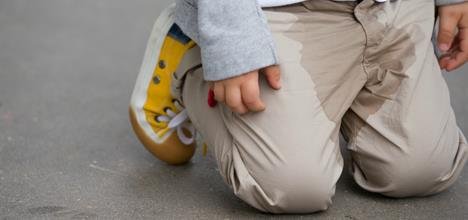Bladder control problems in children can be a source of stress and concern for both the child and their parents. These issues, often referred to as urinary incontinence, are relatively common and can occur during the day or night. While most children achieve bladder control by the age of four, some may experience difficulties that persist beyond this age. Understanding the causes, types, and treatment options for bladder control problems can help parents support their children more effectively.
Types of Bladder Control Problems
Bladder control problems in children can be classified into two main categories: daytime wetting (diurnal enuresis) and nighttime wetting (nocturnal enuresis).
- Daytime Wetting: This occurs when a child who has been potty trained urinates involuntarily during the day. It can be caused by various factors, including urinary tract infections (UTIs), constipation, or an overactive bladder. Emotional stress and certain behavioral issues can also contribute to daytime wetting.
- Nighttime Wetting: Also known as bedwetting, this is more common and typically affects children between the ages of five and seven. While the exact cause is often unknown, factors such as deep sleep, delayed bladder development, or a family history of bedwetting may play a role. In most cases, children outgrow nighttime wetting without the need for medical intervention.
Causes of Bladder Control Problems
Bladder control issues in children can arise from a variety of causes, including:
- Physical Factors: Structural abnormalities in the urinary tract, such as a small bladder or a urinary tract infection, can lead to incontinence. Constipation, which puts pressure on the bladder, is another common physical cause.
- Developmental Delays: Some children may simply develop bladder control later than their peers. This can be due to a slower maturation of the bladder muscles or nerves.
- Emotional and Psychological Factors: Stressful events, such as starting school, moving to a new home, or the birth of a sibling, can trigger bladder control problems. Anxiety and attention-deficit/hyperactivity disorder (ADHD) are also linked to higher rates of incontinence.
- Genetics: There is often a hereditary component to bladder control problems. If one or both parents experienced similar issues during childhood, their children are more likely to have them as well.
Diagnosing Bladder Control Problems
If your child is experiencing bladder control problems, it is important to consult a healthcare professional for a proper diagnosis. The doctor will typically start with a detailed medical history and a physical examination. In some cases, additional tests such as a urinalysis, bladder ultrasound, or voiding cystourethrogram (VCUG) may be required to rule out underlying medical conditions.
Treatment and Management
Treatment for bladder control problems in children varies based on the underlying cause and the severity of the issue. Here are some common approaches:
- Behavioral Interventions: Establishing a regular bathroom schedule can help children develop better bladder control. Encouraging frequent bathroom breaks and limiting fluid intake before bedtime can also be beneficial.
- Medications: In some cases, medications may be prescribed to treat bladder control problems. These can include anticholinergics to relax the bladder muscles or desmopressin to reduce urine production at night.
- Bladder Training: This involves exercises to strengthen the bladder muscles and increase bladder capacity. Techniques such as scheduled voiding and biofeedback can be effective.
- Addressing Underlying Issues: Treating constipation, UTIs, or other medical conditions contributing to incontinence is essential. Additionally, addressing any emotional or psychological factors through counseling or therapy can be helpful.
Supporting Your Child
Bladder control problems can be frustrating and embarrassing for children. It is important for parents to provide support and reassurance. Avoid punishment or shaming, as this can exacerbate the issue. Instead, offer encouragement and praise for progress, no matter how small.
In conclusion, bladder control problems in children are common and usually resolve with time and appropriate management. Understanding the causes and available treatments can help parents provide the necessary support to their children, ensuring a positive outcome. If you have concerns about your child’s bladder control, consult a healthcare professional for guidance and assistance

